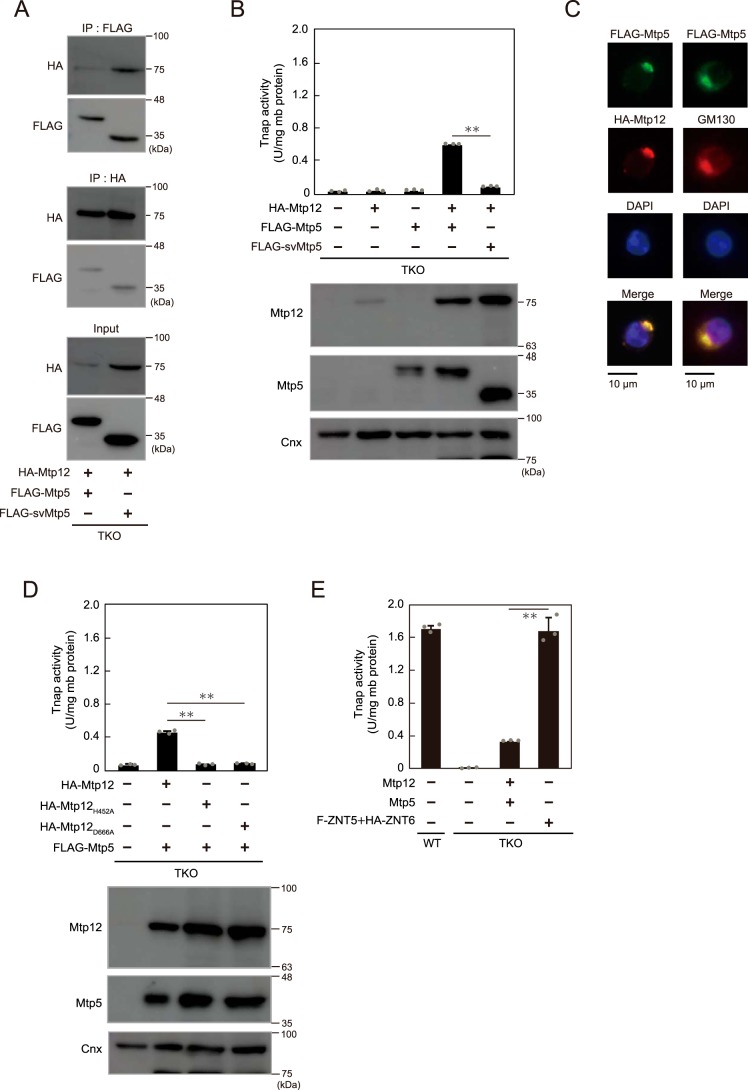Figure 3.
Conserved functions of Mtp12–Mtp5, plant ZNT5–ZNT6 orthologs, in Tnap activation. A, Mtp12 and Mtp5 or Mtp12 and svMtp5 form heterodimers. HA–Mtp12 and FLAG–Mtp5 or FLAG–svMtp5 were co-immunoprecipitated (IP) with antibodies against FLAG and HA tags, respectively, and 10% of each aliquot that was not subject to co-immunoprecipitation was immunoblotted (input panel). B, decreased Tnap activity in TKO cells was restored by co-expression of HA–Mtp12 and FLAG–Mtp5 but not HA–Mtp12 and FLAG–svMtp5. C, co-localization of Mtp12 and Mtp5 in the Golgi apparatus in DT40 cells stably expressing HA–Mtp12 and FLAG–Mtp5. FLAG–Mtp5 was also double-stained with GM130 (right column). DAPI staining and merged images are shown. D, replacement of histidine or aspartic acid with alanine in putative transmembranous zinc-binding site of Mtp12 (Mtp12H452A and Mtp12D666A) led to a failure in the restoration of Tnap activity. E, restoration of Tnap activity by co-expression of untagged Mtp12 and Mtp5 was partial as compared with that following co-expression of ZNT5 and ZNT6 (ZNT5–ZNT6). B and D, stable expression of HA–Mtp12 or FLAG–Mtp5s was confirmed through immunoblotting. Cnx was used as the loading control. B, D, and E, measured Tnap activity is shown as means ± S.D. of triplicate experiments (n = 3). Statistical significance was analyzed by Student's t test in B and E or by one-way ANOVA followed by Tukey's post hoc test in D. **, p < 0.01. Each experiment was performed at least three times, and representative results from independent experiments are displayed.

